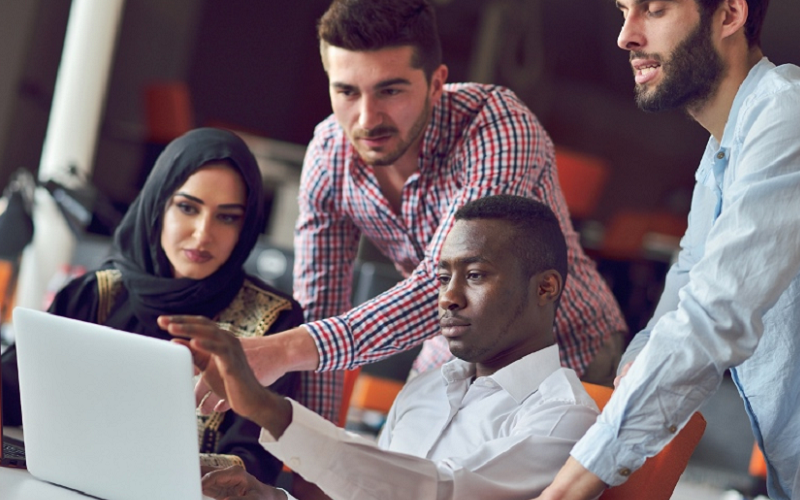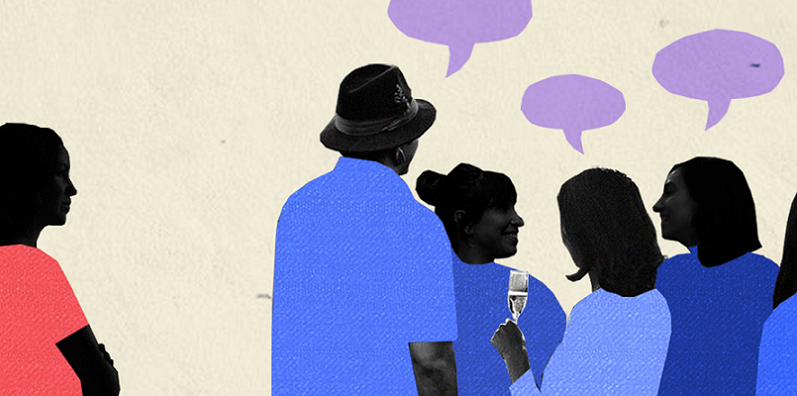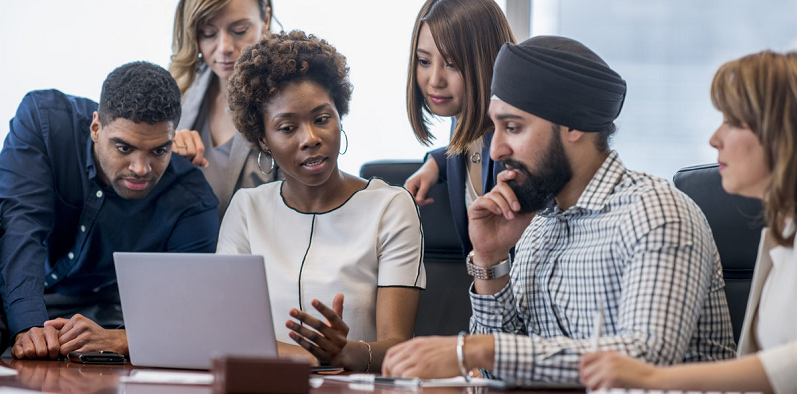
In a world that’s more connected than ever, the significance of understanding and overcoming cultural stereotypes cannot be overstated. Cultural stereotypes, often born from a mixture of historical context, media influences, and personal biases, create invisible barriers that hinder our ability to empathize, connect, and thrive in a multicultural society. Here we shed light on the roots of cultural stereotypes, explore their impacts on individuals and societies, and provide practical steps towards building a more inclusive and understanding world.
Contents
The Roots of Cultural Stereotypes
Understanding the roots of cultural stereotypes is essential to overcome them. These stereotypes are not random or baseless; they have origins that are deeply embedded in history, psychology, media, and popular culture. By exploring these origins, we can begin to unravel the complexities of stereotypes and their pervasive influence in our society.
Historical Context of Cultural Stereotypes
The history of cultural stereotypes is as old as human societies. These stereotypes often originated from a lack of understanding and fear of the unknown. Early human tribes might have developed preconceived notions about neighboring tribes based on limited interactions, leading to stereotypes that were passed down through generations.
Colonialism and imperialism further entrenched these stereotypes, as colonizers often labeled colonized people with broad, negative characteristics to justify their dominance. This historical backdrop set the stage for many of the stereotypes that still exist today.
Psychological Basis of Cultural Stereotypes
Stereotyping is, in part, a natural psychological process. It stems from the human tendency to categorize the world to make sense of it. When we meet someone from a different culture, our brain quickly tries to fit them into pre-existing categories, often relying on the most readily available information, which may be a stereotype. This cognitive shortcut, while efficient, leads to oversimplified and often incorrect judgments about individuals based on their cultural background [1].
Influence of Media and Popular Culture in Perpetuating Cultural Stereotypes
Media and popular culture have a significant role in shaping and perpetuating cultural stereotypes. Movies, TV shows, news outlets, and even literature often depict characters from different cultures in stereotypical ways. These representations, whether intentional or not, reinforce certain perceptions in the minds of the audience. For instance, the portrayal of certain ethnic groups as villains or comic relief in mainstream media contributes to the solidification of specific stereotypes.
Examples of Common Cultural Stereotypes
Various cultural stereotypes have become deeply ingrained in societies worldwide. For example, Asians are often stereotyped as being good at math and science, while Latin Americans might be typecast as fiery or overly passionate. These stereotypes, while seemingly harmless or even complimentary, can have profound implications on how individuals from these cultures are viewed and treated in different contexts, such as in the workplace or in educational settings.

Impacts of Cultural Stereotypes
While it’s important to understand the origins of cultural stereotypes, it’s equally crucial to recognize the profound impacts they have on both individuals and society. These impacts can range from personal distress to broader social implications, affecting how people interact, work, and live together in diverse communities.
On Individuals
Cultural stereotypes deeply influence individuals, often in ways that are unseen but significant.
Personal Identity
Stereotypes can significantly affect a person’s sense of self and identity. When people are constantly subjected to stereotypical representations or expectations, they may begin to internalize these views, which can lead to a distorted sense of self. For example, a young Asian person constantly praised for their mathematical abilities might feel pressured to pursue a career in science or technology, even if their passion lies elsewhere [2].
Mental Health Effects
The mental health effects of cultural stereotypes are profound. Constant exposure to negative stereotypes can lead to feelings of alienation, low self-esteem, and depression. People who feel they are constantly battling stereotypes may experience heightened levels of stress and anxiety, affecting their overall well-being.
On Society
The repercussions of cultural stereotypes extend far beyond individual experiences, permeating various aspects of social life.
Social Cohesion
Cultural stereotypes can erode the fabric of social cohesion. When people hold stereotypical views about others, it creates an environment of mistrust and misunderstanding. This can hinder the development of healthy, diverse communities, where people from different backgrounds live and work together harmoniously.
Workplace Dynamics
In the workplace, cultural stereotypes can lead to unfair treatment, discrimination, and a lack of opportunities for certain groups. For instance, the stereotype that women are less competent in leadership roles can prevent them from ascending to higher positions, regardless of their actual abilities or achievements [3].
Policy and Governance
Stereotypes can also influence policy and governance. Policymakers who harbor cultural stereotypes might implement laws and regulations that inadvertently discriminate against certain groups. This can lead to systemic inequalities, where some groups have less access to resources, opportunities, and rights than others.
Recognizing Our Own Biases
An essential step in overcoming cultural stereotypes is recognizing and understanding our own biases. We all have them, often unconsciously, and they can influence our perceptions and interactions in significant ways. Acknowledging these biases is the first step towards meaningful change, both personally and socially.
Self-Reflection and Acknowledgment of Bias
The journey to recognize our biases begins with self-reflection. It requires honesty and courage to look inward and identify the stereotypes and prejudices we might hold. This process involves questioning our assumptions and the sources of our information about other cultures. We must ask ourselves challenging questions: Do I harbor any stereotypes? How do these beliefs influence my behavior and decisions? Acknowledging these biases doesn’t mean we are bad people; it means we are human and have the capacity to grow.
Understanding Implicit Bias
Implicit bias refers to the attitudes or stereotypes that affect our understanding, actions, and decisions in an unconscious manner. These biases are different from known biases that we might consciously endorse. They are ingrained in our psyche due to societal conditioning and can be hard to detect. Tools like implicit association tests can help in uncovering these hidden biases. Recognizing implicit bias helps us understand how unconscious beliefs and attitudes can manifest in everyday interactions and decisions [4].
Tools for Self-Assessment of Bias
There are several tools available for self-assessment of biases. Online resources, such as the Harvard Implicit Association Test (IAT), provide an opportunity to explore unconscious biases in a structured way. Workshops, seminars, and educational programs focusing on diversity and inclusion can also offer insights into our own biases.
Keeping a journal to reflect on daily interactions and reactions can be another effective tool for self-awareness. These tools are not about assigning guilt but about fostering an understanding of our inner landscape and how it influences our perception of the world.

Breaking Down Stereotypes
Once we recognize and understand our biases, the next crucial step is actively working to break down the stereotypes we encounter. This is a proactive process that involves education, cultural exchange, and changing the narrative in media and representation. By engaging in these activities, we can start to dismantle the harmful stereotypes that affect individuals and society.
Education and Awareness
Education is a powerful tool in the fight against cultural stereotypes. It broadens our understanding and helps us view the world from multiple perspectives.
Role of Educational Institutions
Educational institutions play a crucial role in this process. Schools and universities should incorporate multicultural education into their curricula, teaching students about different cultures, histories, and perspectives. This education should not just be theoretical but also experiential, encouraging students to engage with different cultures directly.
Community Programs
Community programs that focus on cultural awareness and diversity can also help break down stereotypes. These programs can take the form of workshops, cultural festivals, and public speaking events where people from different backgrounds share their experiences and perspectives. Such initiatives create a platform for dialogue and understanding, fostering a sense of community and shared humanity.
Promoting Cultural Exchange and Interaction
Cultural exchange and interaction are vital in dismantling stereotypes, as they allow people to experience different cultures firsthand.
Travel and Experiential Learning
Travel and experiential learning opportunities can be transformative. When people visit new places and immerse themselves in different cultures, their preconceived notions and stereotypes are often challenged. Such experiences promote empathy and understanding, helping to dispel myths and misconceptions [5].
Cultural Festivals and Events
Cultural festivals and events offer a celebration of diversity and an opportunity for people to learn about and enjoy different cultural practices. These events can be platforms for showcasing the richness and diversity of various cultures, helping to break down stereotypes and promote mutual respect.
Media and Representation
The media plays a significant role in shaping public perception. Changing how cultures are represented in the media is crucial in breaking down stereotypes.
Promoting Diverse Media
Promoting diverse media means supporting films, TV shows, books, and other media forms that portray people from different cultures in a realistic and nuanced way. It also involves advocating for diversity in the media industry, ensuring that people from various backgrounds have a voice in creating content.
Role of Social Media
Social media can be a double-edged sword, but it also has the power to be a positive force for change. Individuals and organizations can use social media platforms to challenge stereotypes, share authentic stories, and foster a more inclusive dialogue about cultural diversity.
References
[1] Combating implicit bias and stereotypes
[2] How do we rid ourselves of stereotypes?
[3] How to Overcome Stereotypes In Your Organization
[4] Overcoming Cultural Stereotypes
[5] Developing Critical Thinking Skills For Overcoming Stereotypes In Intercultural Communication
